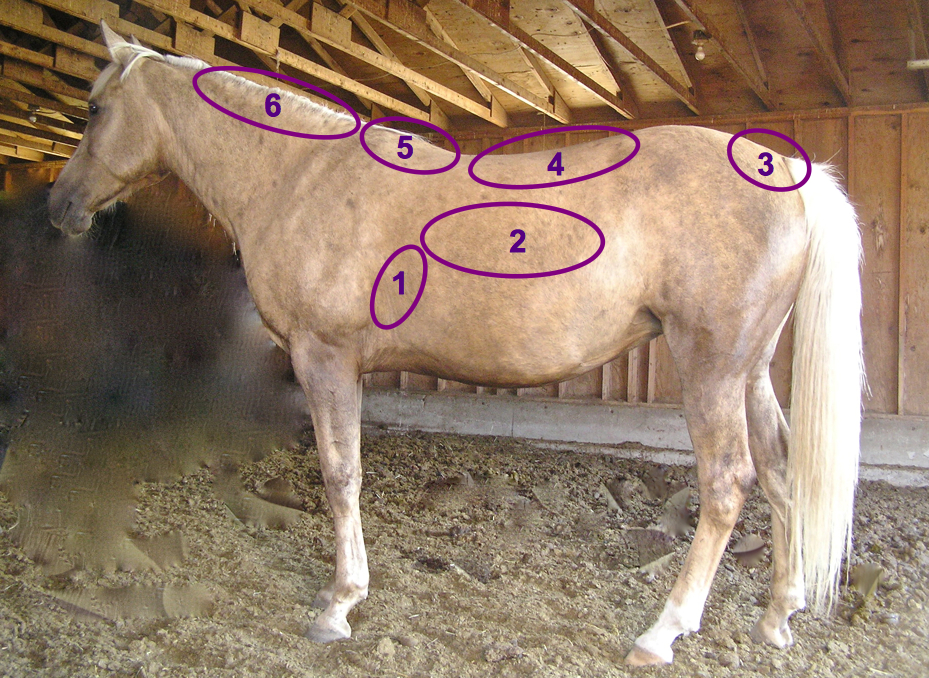November 2016 - Changing the body condition of your horse
If a horse is too fat or too thin its body condition should be corrected. If the horse is healthy, have proper dental care and is dewormed according to your veterinarian’s advice, the body condition will to a major extent be a result of the horse’s physical activity, production (pregnant, lactating, growing) and energy intake.

Body condition scoring
To describe the body condition of a horse, we use a system that allows a horse’s body condition score (BCS) to be set. The BCS scale goes from 1 to 9, where 1 is extremely thin, 5 is moderate and 9 is extremely fat. To study this system in more detail, follow this link: https://en.wikipedia.org/wiki/Henneke_horse_body_condition_scoring_system
This system scores a horse on fat cover at several locations on the body. For most horses, the optimal BCS will be in the range 4 to 6. For breeding mares, the BCS should be a little higher, 6 to 7, as this has been shown to increase fertility and reproductive success.
Today we don’t see so many thin horses. However, the number of fat or obese horses is increasing, together with the frequency of obesity related diseases such as insulin resistance and laminitis. In a recent Danish study on the body condition of Islandic horses in Denmark (Jensen et al., 2016), they found that 6 % of the horses had a BSC of 3 to 4 (were thin), while 24 % had a BSC of 7 to 9 (were very fat).
Changing the body condition of a horse
To change the body condition of a horse takes time. It can be achieved by:
1) Increasing or decreasing the physical activity (exercise) of the horse
2) Increasing or decreasing the energy content of the ration
3) A combination of 1 and 2.
Many factors will influence the amount of energy needed to gain weight or the reduction of energy needed to lose weight. One rough assumption can be that increasing or decreasing the energy content of the ration by 15-20% for 120 days will lead to 1 unit of change of the body condition score. It is important to note that the body condition of a horse (or pony) should not be changed too quickly, as severe over or underfeeding may lead to several diseases.
In PC-Horse you can adjust the calculated energy requirement of a horse by choosing “Correction of body weight” when you enter the body weight of the horse (see picture). You will see how much the calculated energy requirement (in percent) is being changed (red figure). This option is available for all types except for young growing horses. If the body condition of a young growing horse needs to be corrected, it can be done by choosing “Normal” or “High” targeted growth rate, or by choosing a higher or lower “Expected adult body weight,” or changing the level of “Exercise”.


This article was originally written by Dr. Day Austbø.
Copyright: PC-Horse International - Norway 2013.
Feel free to use and publish the material. Please indicate the source and author.










